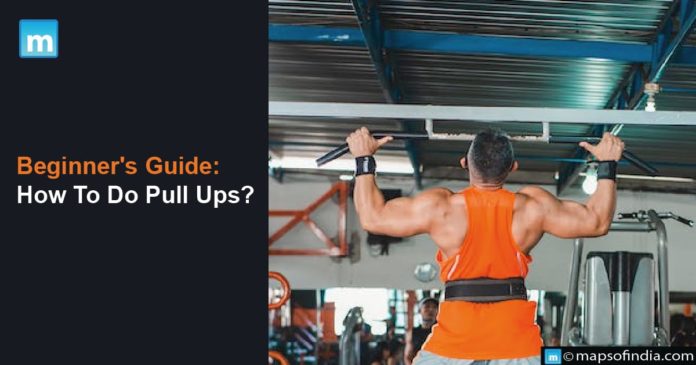Pull-ups are a type of bodyweight exercise that primarily target the muscles in the back and arms. They are an excellent way to increase upper body strength, build muscle, and improve overall fitness.
Benefits of Pull-Ups
-
Upper body strength
Pull-ups are excellent for developing upper-body strength, especially in the spine, chest, and arms. Because the exercise utilises numerous muscular groups, it is an efficient technique to increase total upper-body strength.
- Improved posture
Pull-ups can assist in strengthening form by building the upper back muscles. Stronger back muscles can help bring the arms back and down, minimising bending down and hunching.
-
Increased muscle mass
Pull-ups are a compound exercise, meaning they work for multiple muscle groups simultaneously. This makes them an excellent way to build muscle mass, particularly in the back, biceps, and forearms.
-
Improved grip strength
Pull-ups need a firm grasp. Therefore they can aid in the development of grip strength. This is especially useful for athletes who participate in sports that require a firm grip, such as mountain climbing or wrestling.
-
Increased cardiovascular endurance
Pull-ups can help improve cardiovascular endurance by increasing the heart rate and challenging the body’s aerobic system.
Beginner’s Guide on How to Do Pull-Ups
-
Find a sturdy pull-up bar
Before starting, find a sturdy pull-up bar that can support your weight. The bar should be high enough so your feet don’t touch the ground when hanging from it.
-
Warm-up
Begin with a few warm-up exercises to get the blood flowing, and the muscles loosened up. Try jumping jacks, lunges, and arm circles to prepare your body for the exercise.
-
Grip the bar
Use an overhand hold on the pull-up bar with slightly wider hands than shoulder width. Your hands should be facing outward.
-
Hang from the bar
Hang from the bar, arms fully stretched, and legs off the ground. Your shoulders should be drawn backward and downwards, and your core should always be engaged.
-
Pull yourself up
Use your back and arm muscles to pull yourself up towards the bar. Keep your elbows close to your body and pull until your chin is above the bar.
-
Lower yourself down
Slowly lower yourself back down to the starting position, keeping your arms fully extended. This is one rep.
-
Repeat
Aim to complete three sets of five reps to start. As you build strength, increase the number of reps or sets.
Tips for Beginners
-
Start with assisted pull-ups
Start with assisted pull-ups if you are not yet strong enough to do a full pull-up. This can be done using a resistance band to help support your weight.
-
Practice regularly
Pull-ups can be challenging, but regular practice can help you build strength and improve your technique. Aim to practice at least two to three times per week.
-
Focus on form
Proper form is crucial when doing pull-ups. Keep your shoulders down and back, engage your core, and pull with your back and arm muscles.
-
Be patient
Building strength takes time, so be patient and consistent with your training. With regular practice, you will gradually improve and be able to do more pull-ups.




